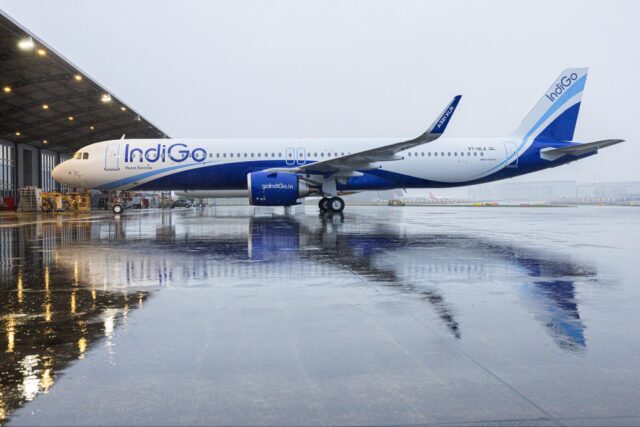Hawk turns 50 – best-selling jet trainer ‘from the cockpit’
September 9, 2024

August 1974: the prototype of what would become the Hawk jet takes to the skies for the first time, launching from Hawker Siddeley Aviation’s airfield in England. The flight followed three years of design and manufacturing effort. Fast forward 50 years: more than 25,000 pilots have trained in Hawks preparing for life in a fast jet cockpit. In that time, it’s been an increasingly global effort.
Since Hawker Siddeley merged into today’s BAE Systems, more than 1,000 Hawks have been sold to 18 air forces from Canada and the United States via Europe and the Middle East to Australia. This makes the Hawk one of the best selling jet trainers of all time, delivering more than four million flying hours.
RAF Red Arrows
The 50th anniversary was marked at this July’s Royal International Air Tattoo, with a special formation flypast of Hawks in a variety of liveries. Perhaps most recognisable as the mount of the Royal Air Force’s aerobatic display team, the Red Arrows, the Hawk is a familiar sight at airshows the world over. Mike Ling, the longest-serving Red Arrows pilot, has more than 3,000 flights in the aircraft and today works with the Saudi Hawks jet display team, also flying the Hawk.
“With hydraulically operated controls, the Hawk is incredibly responsive. The Hawk does exactly what you tell it to do and has very few vices,” Ling said. “The airframe is solid and the engine has had very few failures given the number of hours across its users throughout the world.” Little wonder then it’s been so successful. (Image below: Mike Ling)

Fast jet fledgelings to fighter pilots
I’ve been privileged to experience flying the Hawk on two occasions; firstly some years back, with the Royal Navy in the same T1 variant the Red Arrows fly, and more recently with the RAF at their advanced training base in Wales, where the newer T2 model is used to transform fast jet fledglings into fighter pilots.
As a private pilot, I’ve been lucky enough to fly several jets, but the Hawk surpassed all my expectations. I experienced the same thrill generations of young flyers felt climbing into this aircraft for the first time. It’s fun and rewarding to fly, often likened to a classic sports car with enough to keep even frontline veterans like Mike Ling coming back.
Despite her advancing years, the Hawk still looks sleek, modern and not out of place next to its contemporaries. In the T2 version, glass cockpit screens replace many of the old-fashioned dials and outside, almost the entire airframe is different to the T1. But for today’s ‘from the cockpit’, let’s explore what it’s like flying this 50-year-old design by getting aloft in the original T1.

Getting airborne
After a thorough medical examination and safety briefing on the Martin Baker ejection seat, we walked out to the aircraft to strap in. Settling into the seat, you attach yourself to the jet via an umbilical cord for radio, oxygen and intercom leads. Safety pins are removed once the canopy is closed. At this moment you become acutely aware you are sitting on a live rocket and with zig-zag explosive cables just inches above your head.
The ground crew signals for start and the jet is ready to go as soon as the engine spools up. Our formation, labelled ‘Blue’, trundles to the runway with Blue 2 close behind, clearly visible over my right shoulder. Cocooned inside the tandem cockpit and flying helmet, the noise of the Rolls-Royce Adour engine is muffled, a quiet hiss the only sign the jet is alive.
Cleared to takeoff, our pilot in the front seat advances the throttle, powering up the engine, the nose dipping towards the tarmac as the Hawk strains against the brakes. With a nod of the head, we signal to our wingman to release the brakes and we’re off together, speed building as the wheels rumble across the tarmac. We’re quickly airborne, the undercarriage clunking into its wells as our formation climbs up to circuit height of about 1,000 feet.
The view from the rear seat is incredible. Designed as a trainer from the off, the instructor enjoys a commanding view with just a small portion of the front ejection seat and pilot’s helmet visible ahead through a Perspex screen separating the cockpits.
Glancing around, the instruments and controls reveal the Hawk’s vintage from an age when map and compass were the main navigational tools. The control column is studded with switches for guns, bombs and trim while the throttle is a cylinder sticking up from the left side of the cockpit, with a prominent switch for the air brake.

‘Red Air’ attacking
For this flight, we were tasked as so-called ‘red air’, simulating enemy aircraft and missiles attacking ‘hostile’ shipping out at sea to help train sailors in defending themselves from aerial threats. This required us to storm in very low above the sea and at 450 knots – 517mph. At this height the sensation of speed is overwhelming, the wave tops whizzing past beneath our wings. A still day, the sea was like a mill pond with very little turbulence or buffeting. Gathering pace, the Hawk arrowed towards our first target, a Royal Navy supply ship, which quickly passes under our nose.
Suddenly the Hawk is rolled into a left-hand turn and we pull into the manoeuvre. The G-suit inflates as we yank 4G and my stomach and legs are gripped in an uncomfortable vice. Looking left our shiny black wing tip appears to be almost grazing the sea as we carve past the ships below in a wide turn. The G force means my whole body is four times heavier than normal in the turn and I’m struggling to hold up the camera against the incredible force forcing my limbs downwards. As we level off the G recedes and we line up for another target run.
Ahead of us the ships begin evasive manoeuvring, wheeling around surprisingly tightly as they try to shake off the threat by turning head-on towards the incoming missile, presenting their smallest radar cross-section. Attack sequence completed, we take the jet up through the clouds for some formation aerobatics. Linking up once more with Blue 2 we try out some steep turns, wing-overs and barrel rolls. Following through on the throttle and stick it’s clear the Hawk has superbly harmonised controls and feels light and responsive to every touch.

You have control…
I’m thrilled to be offered a chance to feel for myself to how agile the Hawk is. With the classic exchange ‘You have control!’ I take over as below us the emerald sea along Cornwall’s golden beaches glimmers in the sunlight. With fewer than 400 hours in my logbook and just a handful of jet hours, I’m surprised by how easy the Hawk is to fly. With no gyroscopic actions from a propeller in front, the rudder pedals are mere footrests and excess power from the engine means the aircraft can do anything you desire. However, what is clear from my ham-fisted efforts is it would take much more training and experience to find the finesse and skill necessary for professional military aviators to get the best from this aircraft.
Fuel now running low, we’re cleared to return to the airfield for a run-and-break into the circuit to land. We break into the circuit with a fast roll and pull as the throttle comes back and airbrake deploys. Landing gear is lowered at around 200 knots and the flaps selected as we glide down towards the main runway. Being predominantly a tailwheel pilot, I’m expecting a flare to cushion our arrival. But in a fast jet the touchdown is more emphatic, with a hefty bump as the undercarriage absorbs our impact.
Taxying back to the ramp we replace the pins for the ejection seat and canopy and disconnect from the personal survival pack in the seat. Once back in our parking slot, the Hawk is shut down quickly and I’m sitting in the cockpit with my helmet off and canopy open just listening to the gyros winding down. It’s an experience that will stay with me for a lifetime.
Speaking to military pilots who’ve sampled the Hawk at some point in their career, it’s easy to see why the aircraft is such a popular trainer and has sold to so many air arms around the world. It gives most of the sensations and ‘buzz’ you get from flying a frontline aircraft.

















